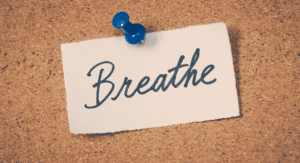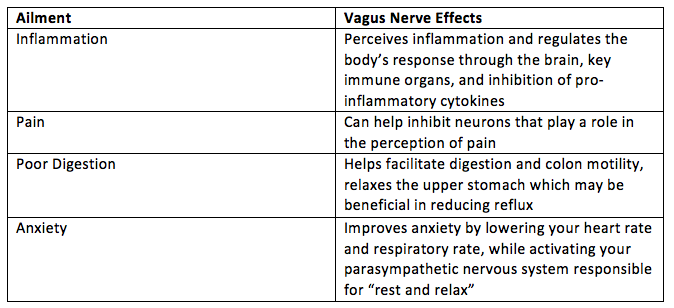
Women in perfectly matching workout gear showing off their entire week of meal prep and their homemade foot scrub got you feeling like a self-care failure? Prior to the self-care social media craze hitting Instagram and Pinterest, we have often heard the old simple wisdom to slow down and breathe. When feeling out of control with deadlines, traffic, parenting responsibilities, and trying to maintain order in our environment, taking a couple deep breaths doesn’t seem to even put a dent in our issues. An emotional explosion would happen when someone told me to “just breathe!” Those two simple words seemed to downplay my stress and problems.
My attitude towards “just breathe” changed when I began to understand the physiology behind breathing from your diaphragm and how one muscle can provide such powerful benefits to the body. Your nervous system is made up of a wide network of nerves much like a highway with many entrances, exits, and connections. The diaphragm is one of your primary muscles of breathing and is innervated by your vagus nerve. The vagus nerve is part of your nervous system’s network that causes rest and relaxation. Breathing from your diaphragm can stimulate the vagus nerve and cause a variety of powerful beneficial effects for common ailments we may experience:

Fun Fact: In Latin, the term “vagus” means wandering and straying. The vagus nerve runs from your head all the way to your colon. It is a term that has caused some researchers to nickname the vagus nerve the “great wandering protector.”
How do we breathe from our diaphragm to stimulate this powerful nerve?
It is actually pretty simple. Try and experiment by following the steps below:
- Place one hand on your chest and one hand on your diaphragm where your lower rib cage is.
- See if you can take a long inhale through your nose (try five seconds to start). Attempt to send the breath more to your bottom hand versus the top hand. Slowly exhale the air out.
- If you feel only your top hand move, try again. A good goal is to start is practicing five minutes a day.

Diaphragmatic breathing can be performed in any position. Once you feel you are improving, you can perform it anywhere without needing to use your hands as external cues. If you continue to have trouble with diaphragmatic breathing, don’t sweat it. Physical therapists in all kinds of specialties can be trained at teaching you how to perform diaphragmatic breathing. The knowledge of how to practice diaphragmatic breathing is a great self-care tool that doesn’t require any equipment or money.
With An Open Learning Mind,
Andrea
References:
Bordoni B, Zanier E. Anatomic connections of the diaphragm: influence of respiration on the body system. J Multidiscip Healthc. 2013; 6:281-291.
Bordoni B, Purgol S, Bizzarri A, Modica M, Morabito B. The influence of breathing on the central nervous system. Cureus. 2018;10(6):e2724. Published 2018 Jun 1. doi:10.7759/cureus.2724
Bordoni B, Morabito B. Symptomatology correlations between the diaphragm and irritable bowel syndrome. Cureus. 2018;10(7):e3036. Published 2018 Jul 23. doi:10.7759/cureus.3036.
Browning K, Verheijden S, Boeckxstaens G, et al. The vagus nerve in appetite regulation, mood, and intestinal inflammation. Gastroenterology. 2017;152: 730-744.
Breit S, Kupferberg A, Rogler G. Vagus nerve as modulator of the brain-gut axis in psychiatric and inflammatory disorders. Front Psychiatry. 2018; 9:44.
Bacquiran B, Bordoni B. Anatomy, head and neck, anterior vagus nerve. [Updated 2019 Sep 28]. In: StatPearls [Internet]. Treasure Island (FL): StatPearls Publishing; 2020 Jan. Available from:https://www.ncbi.nlm.nih.gov/books/NBK547696/.

















Thank you for this Andrea! I struggle sometimes to slow down, and even just trying to see if I was completing the diaphragmatic breathing correctly, I felt myself get a little calmer. Look forward to implementing it more often.
Comments are closed.